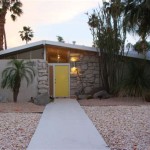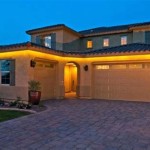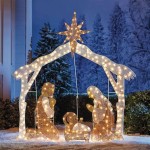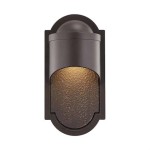Do Outdoor Wood Furnaces Require Electricity?
Outdoor wood furnaces, also known as outdoor wood boilers, are heating systems designed to burn wood to heat water, which is then circulated to provide heating for homes, businesses, and other structures. A common question arises regarding their operational requirements: do these furnaces require electricity to function? The answer is generally yes, but the extent of reliance on electricity can vary depending on the specific model and design.
Understanding the role of electricity in outdoor wood furnaces is crucial for prospective buyers and existing owners alike. It impacts operational costs, backup options during power outages, and overall system efficiency. Therefore, this article will explore the specific components and processes within an outdoor wood furnace that require electrical power.
Essential Electrical Components in Outdoor Wood Furnaces
Several key components within an outdoor wood furnace rely on electricity for operation. These include pumps, fans, and control systems. Understanding the function of each component elucidates the necessity for electrical power.
Circulator pumps are critical for moving the heated water from the furnace to the building being heated. These pumps are electrically powered and responsible for maintaining a consistent flow of water through insulated underground pipes. Without functional pumps, the heat generated by the burning wood cannot be transferred effectively to the intended space. The size and number of pumps can vary depending on the size of the furnace and the heating demand of the building. Larger and more complex systems might require multiple pumps to ensure adequate water circulation and even heat distribution.
Combustion fans, also known as draft fans, control the airflow within the firebox. These fans are electrically powered and play a vital role in regulating the burn rate and overall efficiency of the furnace. By controlling the amount of air supplied to the fire, the fan helps ensure complete combustion of the wood, reducing smoke emissions and maximizing heat output. Some outdoor wood furnaces also incorporate induced draft fans in the exhaust system to further enhance airflow and minimize smoke. The complexity of the fan system can range from a simple on/off mechanism to more sophisticated variable-speed controls that adjust airflow based on temperature and oxygen levels in the firebox.
Electronic control systems manage various aspects of the furnace's operation, including temperature regulation, pump activation, and safety features. These control systems are typically powered by electricity and rely on sensors and microprocessors to monitor and adjust the furnace's performance. Advanced control systems may also offer features such as remote monitoring and automatic shutdown in case of malfunctions. The sophistication of the control system directly impacts the furnace's energy efficiency and overall reliability.
Specific Electrical Requirements and Consumption
The electrical requirements of an outdoor wood furnace are generally not substantial compared to other household appliances, but they are nonetheless a necessary factor to consider. The specific amount of electricity consumed depends on the size of the furnace, the type of components used, and the frequency of operation. It is important to review the manufacturer's specifications to determine the exact electrical requirements for a particular model.
Pumps typically consume a significant portion of the overall electrical load. The wattage of the pumps varies depending on their size and capacity. Larger systems with multiple pumps will naturally have higher electrical consumption. Regular maintenance of the pumps, such as cleaning and lubrication, can help improve their efficiency and reduce energy consumption. Furthermore, selecting energy-efficient pump models can contribute to long-term cost savings.
Fans also contribute to the electrical load, although their consumption is generally lower than that of pumps. The wattage of the fan depends on its size and type. Variable-speed fans, which adjust their speed based on demand, can offer energy savings compared to fixed-speed fans. Like pumps, regular maintenance of the fan, including cleaning and inspection, can help ensure optimal performance.
The control system's electrical consumption is typically minimal compared to pumps and fans. However, modern control systems with advanced features such as remote monitoring may have slightly higher energy requirements. Proper programming and configuration of the control system can help optimize its performance and minimize energy consumption.
The overall electrical consumption of an outdoor wood furnace can range from a few hundred watts to several hundred watts, depending on the factors mentioned above. While this may not seem like a significant amount, it is important to factor in the continuous operation of the furnace throughout the heating season. Over time, the cumulative electrical consumption can add up, impacting the homeowner's utility bill. Therefore, selecting energy-efficient components and implementing best practices for operation can help minimize electrical costs.
Backup Power Solutions and Considerations
Given the reliance of outdoor wood furnaces on electricity, it is crucial to consider backup power solutions in case of power outages. Without electricity, the pumps and fans will cease to function, potentially leading to overheating and damage to the system. Furthermore, the lack of heat circulation could result in freezing pipes during cold weather. Therefore, having a reliable backup power source is essential for ensuring the safe and continuous operation of the furnace.
One common backup power solution is a generator. Generators can provide electricity during power outages, allowing the pumps and fans to continue operating. The size of the generator required depends on the total electrical load of the furnace. It is important to select a generator that can handle the startup surge of the pumps and fans, which can be higher than their normal operating wattage. Generators come in various sizes and fuel types, including gasoline, propane, and natural gas. Selecting the appropriate generator depends on factors such as cost, availability of fuel, and ease of use.
Another backup power option is a battery backup system. These systems typically consist of a battery bank and an inverter, which converts the battery's DC power to AC power suitable for the furnace's electrical components. Battery backup systems can provide a limited amount of power, typically for a few hours, depending on the battery capacity and the electrical load. These systems are suitable for short-term power outages but may not be sufficient for extended outages. Battery backup systems can be charged using solar panels, providing a renewable and sustainable source of power.
An uninterruptible power supply (UPS) is another option, offering immediate but short-term backup power. A UPS system is designed to provide power seamlessly in the event of a power outage, ensuring that the furnace continues to operate without interruption. UPS systems are typically used for critical equipment that requires continuous power, such as computers and servers. While a UPS can provide valuable backup power for an outdoor wood furnace, its limited battery capacity makes it more suitable for short-term outages.
When selecting a backup power solution, it is important to consider factors such as cost, reliability, ease of use, and fuel availability. Regular maintenance and testing of the backup power system are essential to ensure its readiness in case of an emergency.
Additionally, some outdoor wood furnace models are designed with gravity-fed or natural convection systems that require minimal electricity. These designs can provide a degree of heating even during a power outage, although their efficiency may be lower than that of electrically powered systems. Choosing a model with these features can offer added security and peace of mind.
In conclusion, while outdoor wood furnaces primarily rely on wood as their fuel source, electricity plays a crucial role in their operation. Understanding the electrical requirements and implementing appropriate backup power solutions is essential for ensuring the safe, efficient, and continuous heating of a building.

Outdoor Wood Furnace Pros And Cons Is It Right For You

Outdoor Wood Burning Furnace Boilers From Madison Wi To E Iowa

Installation Of A Nature S Comfort Outdoor Wood Furnace

Outdoor Wood Coal Boiler Installation

Strawbale Farms Blog Outdoor Boilers Solar Electric Wi Mn

Forced Air Outdoor Wood Burning Furnaces And Boilers

Outdoor Wood Furnace S In 2024

How To Connect An Outdoor Wood Boiler Indoor Outdoorboiler Com

Frequent Questions About Wood Burning Appliances Us Epa

Wood Boiler Water Treatment Chemicals Iro
Related Posts







